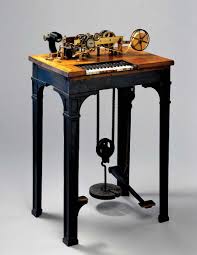Stamp: Typeset design (Ceylon 1892)
Typeset design (Ceylon 1892)
01 April (Ceylon ) within release Telegraphs: Typeset provisionals (1892-1903) goes into circulation Stamp Typeset design face value 40 Ceylonese cent
| Stamp Typeset design in catalogues | |
|---|---|
| Stanley Gibbons: | Sg: LK T128 |
Stamp is square format.
Dated 1/4/92, with large control figures Bisected in half upon use, with the top half being given to the sender of the telegraph as receipt for payment.Also in the issue Telegraphs: Typeset provisionals (1892-1903):
- Stamp - Typeset design face value 20;
- Stamp - Typeset design face value 20;
- Stamp - Typeset design face value 40;
- Stamp - Typeset design face value 40;
- Stamp - Typeset design face value 60;
- Stamp - Typeset design face value 60;
- Stamp - Typeset design face value 80;
- Stamp - Typeset design face value 80;
Stamp Typeset design it reflects the thematic directions:
In British heraldry, a coronet is any crown whose bearer is less than sovereign or royal in rank, irrespective of the crown's appearance. In other languages, this distinction is not made, and usually the same word for crown is used irrespective of rank (German: Krone, Dutch: Kroon, Swedish: Krona, French: Couronne, etc.) In this use, the English coronet is a purely technical term for all heraldic images of crowns not used by a sovereign, and implies nothing about the actual shape of the crown depicted. A Coronet is another type of crown, but is reserved for the lower ranks of nobility like Marquesses and Marchionesses, Earls and Countesses, Barons and Baronesses, and some Lords and Ladies. The specific design and attributes of the crown or coronet signifies the hierarchy and ranking of its owner.
Telegraphy is the long-distance transmission of messages where the sender uses symbolic codes, known to the recipient, rather than a physical exchange of an object bearing the message. Thus flag semaphore is a method of telegraphy, whereas pigeon post is not. Ancient signalling systems, although sometimes quite extensive and sophisticated as in China, were generally not capable of transmitting arbitrary text messages. Possible messages were fixed and predetermined, so such systems are thus not true telegraphs.


